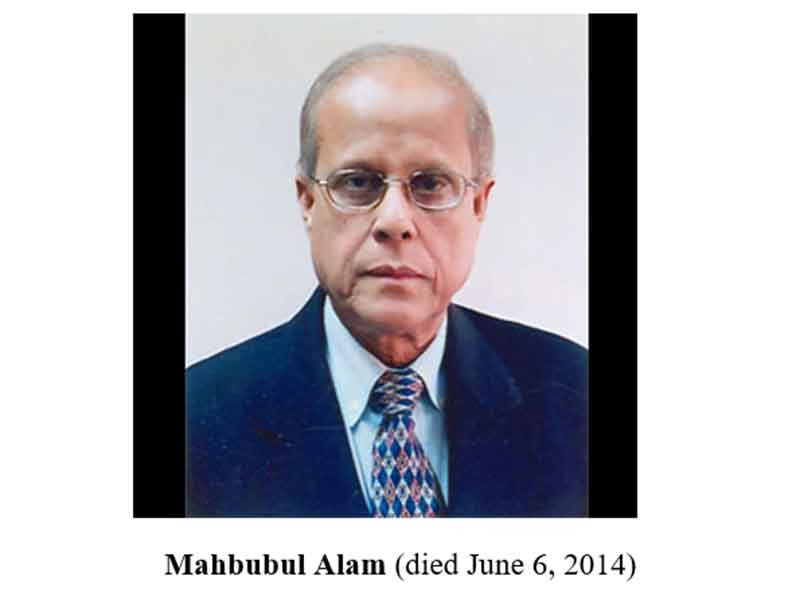
Text and translation (by me) of a Tagore song “Hridoyer ekul, okul, dukul veshe jay, hai sajoni, uthale noyonbari…” sung in Bengali by late Papaia Sarwar
One of the most unpretentious and passionate singers of Rabindra sangeet, Papia Sarwar, known for her distinctive, and heavy sounding voice passed away on December 12 in Dhaka, Bangladesh. She stood apart from other singers of Tagore songs for her originality, and different types of unique expressions. Papia had been battling pancreatic cancer for the last four years. I believe, out of all the Tagore singers in the last four decades, she had a real understanding of Tagore songs. Since hearing the news of her death, I have been feeling a sense of personal loss. The reason for that is I knew her myself. One of her younger sisters, Lulu, was my friend. We lived in the same neighborhood in Dhaka for a number of years. Lovingly, I also called Papia, “Pappu” or sometimes “Bubu,” to mimic Lulu.
Papia’s large family lived three houses down from our family on the first floor of a white duplex house. The house had red columns and a mosaic veranda. From my upstairs room’s window, I often saw her chatting with her sisters sitting in the veranda. Sometimes she would be alone reclining in a wicker chair with Geetabitan on her lap. Perhaps in such solitary moments she was memorizing a song. On some Fridays, l would go to her house to hang out with Lulu. If Papia happened to open the door, she would greet me with a smile, and ask me to come inside, and call for Lulu. She always seemed pensive, humming, and lost in her thoughts.
Papia Sarwar came from a culturally engaged family who were art and music enthusiasts. She was the fifth child of her parents. She had seven other older and younger sisters. Legendary Tagore singer Srimati Nilima Sen first spotted her in Dhaka, during a cultural exchange program between Dhaka and Kolkata. With her encouragement, Papia (Rahman) auditioned, and won the spot to go to Vishwa-Bharti. Papia was the first student to receive a scholarship from the government of India to train and complete her education in Rabindra sangeet. She left her studies as a second year student at the Zoology department at Dhaka University. She then attended Vishwa-Bharti University and got her undergraduate degree.
Papia in her subsequent interviews had revealed that she never regretted her choice, as music is what she had wanted to do since she was a five-year old girl. From her young age, this gifted girl had an unwavering commitment to create music through her everyday practice. She drew inspiration from her older siblings who were singers, dancers, artists, and performers. Papia’s mother was a skilled pianist.
Prior to going to Santiniketan, Papia took music lessons at Dhaka’s Chhayanaut under prominent Rabindra exponent Wahidul Haq and others. “She joined Chhayanaut in the sixth grade and later continued her artistic journey at the Bulbul Academy of Fine Arts (BAFA). By 1967, she was already a listed artist for both radio and television.”
At Santiniketan, Papia was under the tutelage of Srimati Nilima Sen, and Srimati Kanika Bandyopadhyay. She learned from the best of the best.
Papia had an ability to bring through her music something exclusive, and a new appeal for the listeners. All through her music career, she had maintained that creative freshness.
Papia came back from Santiniketan as an altered figure. When I saw her on television singing her famous super hit Tagore song Na, sajani na, ami jani jani, shey ashibena … it was very noticeable how her entire persona had changed compared to before. At the time, Bangladesh had only one television channel named BTV (a government sponsored channel). During music hour, in the evening, I remember her to be a regular presence singing Rabindra sangeet. Papia would always dress in pastel colored cotton tater sari. She had a quite different way of draping the sari on her. Her sari’s anchol (end) was so long that it almost touched the floor. Some women find wearing a sari an elaborate process. Papia with her signature traditional style made sari wearing look very elegant instead of feeling contrived. The elaborate process of wearing a sari came naturally to her, and as a sophisticated Bengali woman she carried it very well. Papia had applied minimal make up, and nonetheless looked lovely on the television screen. Other women her age at the time had tried to copy her look, but never could quite pull it off.
All that changed after her marriage for some reason. Papia Sarwar would appear in public to perform; all made up in Kolkata artistes’ style — flamboyant. She wore vibrant colored Indian saris on television. Her entire get up changed — from a simple and subdued traditional look to wearing very bright colors with intricate embroidery. Her dramatic transformation from wearing no jewelry in the beginning of her music career to Bollywood style clunky oxidized necklaces was quite something! In her bohemian beaded necklaces, I had failed to see the cultural significance. Her fashion statements in later years were more in sync with artists like Indrani Sen or Iman Chakravarty.
Such changes had remained merely on the outside though. Papia Sarwar’s commitment to music in representing Rabindranath Tagore had continued to be wholesome. I derived reaching such conclusions seeing her album cover photos and listening to her singing from a handful of CDs I got from friends and family as souvenirs when they visited home. I was not physically in Bangladesh to follow her musical journey post 1979.
Gradually, I came to know that Papia Sarwar did not go after fame or commercial success. From an interview a few years ago, I had gathered that the music producers at the time produced a list of most popular Tagore songs before approaching her for a new album. They wanted her to accommodate just by singing those selected songs. Papia understood their position from the commercial point of view, but at the same time she was not someone who would be told by others which songs she could sing. She was not the type of person to compromise her integrity for success. As a true devotee of Rabindranath Tagore, Papia represented Tagore’s aura in her singing.
In selecting Tagore songs from the Geetabitan, she often had chosen the most obscure songs that no other artistes in BD had sung before. For that, critics in the music industry called her “moody,” a term that she herself was comfortable using in defining herself.
“Papia Sarwar received the Rabindra Award from Bangla Academy in 2013 and was honored with the Bangla Academy Fellowship in 2015. In 2021, she was awarded the Ekushey Padak.”
In the summer of 2024, Papia Sarwar got the Lifetime Achievement Award given to her by Dhaka’s popular TV channel i. Holding the award in her hands and standing between Tagore singer Rezwana Chy Bannya and Channel i’s managing director Faridur Reza Sagor, ‘bubu’ was unrecognizable. Her signature sari wearing commanding presence was replaced with a cap wearing Papia who had donned a loose long garment. Gone were her confident presence, and that half smile. She seemed tired, exhausted with swollen baggy eyes. She really looked like a cancer patient who was brought from the hospital to receive this award. The persons who showed her their appreciation with the award are deeply involved with music. She may have thought they would feel let down if she did not make an effort to show up. In the middle of her own battle with cancer, she thought of others’ feelings first. This shows conviction and character, and true love for Rabi Thakur. Seeing ‘Pappu’ in that state was extremely hard for me to process and left me thinking death is an unavoidable part of the cycle of life.
Papia Sarwar had a clear understanding of how to sing Rabindra Sangeet in a correct way without changing the pronunciation. She agreed that with changing times the taste for music has altered somewhat. Younger generations seem to prefer upbeat music over slow music. She wasn’t against fusion music per se but if one wants to mix it in Tagore songs, they have to be mindful of not compromising its essence, and more importantly, the pronunciation.
Subscribe to Our Newsletter
Get the latest CounterCurrents updates delivered straight to your inbox.
“There’s a special aura around the people who are part of the first generation in a particular field. Their legacy becomes intrinsically linked with that field as they invariably set the tone for everything that comes after them,” read one of the tributes written for her after her passing.
“A trailblazer in Bangladesh’s Rabindra Sangeet scene and an Ekushey Padak laureate leaves behind a profound legacy of musical excellence and cultural contribution following her passing on 12 December,” said another.
Rest in peace, Bubu!
__________________________________________________________________________
The ramparts of my heart are breached, oh my precious
Parjaay: Prem (love)
Taal: Dadra
Raag: Bibhas
Written: 1893
========================================
The river banks of my heart are dissolved, oh my dearie,
Tears are welling up in my eyes.
I look all around; nary a thing I can summon up.
A (not so gentle) tug on my heartstrings,
The flooded river overflows,
What a stormy day today, oh precious!
Hard to restrain the dam (of my heart).
(I know not)
Why this sweet suffering, in my blossoming youth.
What flew in the fierce winds from nowhere?
Heart is aflutter, Soul is all aflame —
I know not the name of this Desire, this Suffering –
Nor how to quench these myself.
______________________________________________________________________________
Zeenat Khan writes from Maryland, USA














































